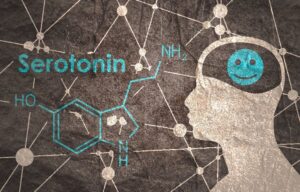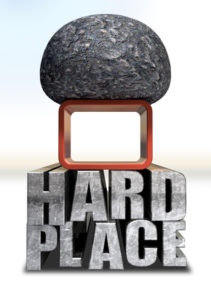The Myth of the Serotonin Theory of Depression

A research article by Joanna Moncrieff, Mark Horowitz and others, “The serotonin theory of depression: a systematic review of the evidence”, published in the journal Molecular Psychiatry in July of 2022, continues to draw media attention to its findings. The researchers did a systematic umbrella review of the principle relevant areas of research and concluded that the main areas of serotonin research provide no consistent evidence of an association between serotonin and depression. “We suggest it is time to acknowledge that the serotonin theory of depression in not empirically substantiated.” In other words, it’s a myth.
The response from many psychiatrists to the article was that the serotonin imbalance theory has not been treated seriously within the field for many years. Neuroscience News & Research quoted several who thought the findings were not surprising. Dr. Michael Bloomfield a consultant psychiatrist and head of the translational psychiatry research group at University College London said he didn’t think he’d met any serious scientists or psychiatrists who thought that “all causes of depression are cause by a simple chemical imbalance in serotonin.” Allan Young, the director of the Centre for Affective Disorders at King’s College London said, “Most psychiatrists adhere to the biopsychosocial model with very few people subscribing to a simple ‘chemical imbalance’ theory.”
According to Ang, Moncrieff and Horowitz in Is the chemical imbalance theory an ‘urban legend’?, historically there was a considerable promotion of the serotonin hypothesis of depression in both the psychiatric and the psychopharmacology literature. Research papers supporting it were widely cited. While some textbooks were more nuanced, others could be seen to unreservedly indorse it. The American Psychiatric Association (APA) published a patient leaflet in 2005 that said, “antidepressants may be prescribed to correct imbalances in the levels of chemicals in the brain.” See, “The Death of the Chemical Imbalance Theory?” on this website.
It is often assumed that the effects of antidepressants demonstrate that depression must be at least partially caused by a brain-based chemical abnormality, and that the apparent efficacy of SSRIs shows that serotonin is implicated. Other explanations for the effects of antidepressants have been put forward, however, including the idea that they work via an amplified placebo effect or through their ability to restrict or blunt emotions in general.
Moncrieff et al said surveys suggest that 80% of the general public now believe depression is caused by a ‘chemical imbalance.’ They said many general practitioners also subscribe to this view and popular website commonly cite the theory.
The chemical imbalance theory of depression is still put forward by professionals, and the serotonin theory, in particular, has formed the basis of a considerable research effort over the last few decades. The general public widely believes that depression has been convincingly demonstrated to be the result of serotonin or other chemical abnormalities, and this belief shapes how people understand their moods, leading to a pessimistic outlook on the outcome of depression and negative expectancies about the possibility of self-regulation of mood. The idea that depression is the result of a chemical imbalance also influences decisions about whether to take or continue antidepressant medication and may discourage people from discontinuing treatment, potentially leading to lifelong dependence on these drugs.
Writing for The Conversation, Moncrieff and Horowitz said the serotonin theory of depression has been one of the most influential and extensively researched biological theories of depression. Most antidepressants now in use are presumed to work through their effects on serotonin or noradrenaline. Yet their study shows that is not supported by scientific evidence. “It also calls into question the basis for the use of antidepressants.”
It is important that people know that the idea that depression results from a “chemical imbalance” is hypothetical. And we do not understand what temporarily elevating serotonin or other biochemical changes produced by antidepressants do to the brain. We conclude that it is impossible to say that taking SSRI antidepressants is worthwhile, or even completely safe.If you’re taking antidepressants, it’s very important you don’t stop doing so without speaking to your doctor first. But people need all this information to make informed decisions about whether or not to take these drugs.
The organization, Inner Compass Initiative, was able to get Joanna Moncrieff, Mark Horowitz and Irving Kirsch together for an online discussion in “Moving Beyond Myth: A Postmortem Analysis of Chemical Imbalances and Antidepressants Efficacy.” On its website Inner Compass Initiative said it is an organization that is “dedicated to helping people make more informed choices about taking and withdrawing from psychiatric medications.”
Irvin Kirsch has published several studies of the placebo effect and antidepressants, demonstrating that most of the efficacy with antidepressants is from the placebo effect. For more information on Irving Kirsch and his research, see, “Dirty Little Secret,” and “Antidepressant Fall From Grace, Part 2” on this website.
The Inner Compass Initiative moderator, Laura Delano, said the use of antidepressants in the West more than doubled between 2000 and 2015. One in seven Americans and one in six in England take an antidepressant. In October of 2004 the FDA issued a black box warning, indicating an increased risk of suicidal ideation and behavior in children and adolescents treated with SSRIs. However, their off-label use with children and adolescents has increased. In “Antidepressants in Children and Adolescents”, Boaden et al said: “From 2005 to 2012, the prevalence of antidepressant use has increased from 1.3% to 1.6% in the USA, from 0.7% to 1.1% in the UK.”
While the overall percentages are low, keep in mind that at least in the U.S. those increases took place after the FDA required a black box warning of an increased risk of suicidality with children and adolescents treated with SSRIs. In the UK, it represents an increase of over 36%; in the USA, by almost 19%.
“Moving Beyond Myth” begins with a description of how serotonin is measured within the body and a review of the history of the chemical imbalance theory. Joanna Moncrieff said it is not the case that there is a set normal level of serotonin against which people’s serotonin can be judged. She went on to say that the chemical imbalance theory of depression was one of a number of chemical imbalance theories of mental disorders that arose in the 1960s, “in the context of thoughts about drugs that are used to treat these disorders. So, they’re always directly related to the use of drug treatments.” Psychiatrists and researchers came to think that the drugs are working by targeting the underlying abnormality.
Initially they thought that noradrenaline might be relevant in depression. They hypothesized that depression might be due to lower levels of noradrenaline. But when the drugs that selectively target serotonin came out, “people started to think that the underlying abnormality was an abnormality of serotonin, rather than noradrenaline. And that is what the pharmaceutical industry took hold of and ran with in the 1990s when they started to market SSRIs.”
Her point is that chemical imbalance theories have always been dreamed up in the context of the use of different drugs to treat mental disorders. “They are based on the assumption that drugs are working by targeting the underlying abnormality, and that you can deduce the abnormality from the opposite of what the drugs do.” Mark Horowitz goes on to describe the findings of “The serotonin theory of depression: a systematic review of the evidence.”
An added bonus in “Moving Beyond Myth” is to hear Irving Kirsch describe his research into antidepressant efficacy and its relationship to the placebo effect. His most recent research was published in August of 2022 in the BMJ (British Medical Journal). Kirsch and the other researchers did a participant level analysis of randomized, placebo-controlled trials of acute monotherapy for the treatment of major depressive disorder submitted to the FDA between 1979 and 2016. The Conclusions section of the article said:
Patients with depression are likely to improve substantially from acute treatment of their depression with drug or placebo. Although the mean effect of antidepressants is only a small improvement over placebo, the effect of active drug seems to increase the probability that any patient will benefit substantially from treatment by about 15%. Further research is needed to identify the subset of patients who are likely to require antidepressants for substantial improvement. The potential for substantial benefit must be weighed against the risks associated with the use of antidepressants, as well as consideration of the risks associated with other treatments that have shown similar benefits. Because the benefits and risks might be categorically different (eg, reduced sadness v anorgasmia), weighting should be done at the individual level, jointly by patients and their care providers.
The belief that a chemical imbalance underlies depression and other mental disorders has begun to unravel. For some time, it has been set aside by researchers and some psychiatrists as an urban legend. The pharmaceutical industry may continue to hold on to the notion that drugs work by targeting an underlying abnormality and that you can identify the abnormality “from the opposite of what the drugs do.” But it is time the public became aware that the chemical imbalance theory of depression is just a myth.



